25 Destinations That Will Make You Fall In Love With Gothic Architecture
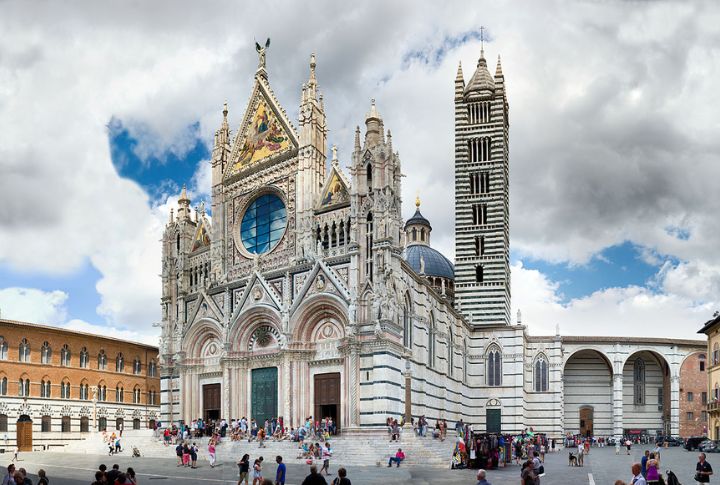
Stone and sunlight capture attention in ways that endure through centuries. Built not for fleeting trends but for lasting impact, these structures have a quiet yet powerful drama. Each detail holds purpose, and each cathedral whispers history. If ancient cathedrals speak to you, this list will inspire your journey.
Cologne Cathedral, Germany
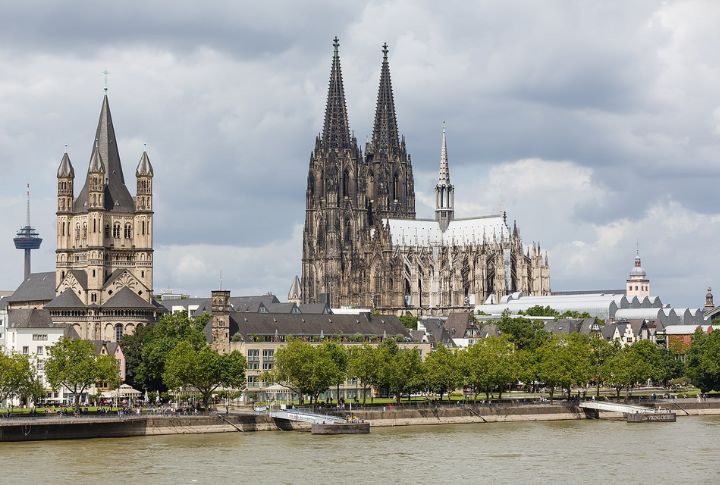
They tried for centuries to finish it. Work began in 1248 but stalled for over 300 years. When finally completed in 1880, it had twin spires rising 515 feet to become the tallest building in the world at that time. Moreover, it’s home to the Shrine of the Three Kings.
Milan Cathedral, Italy
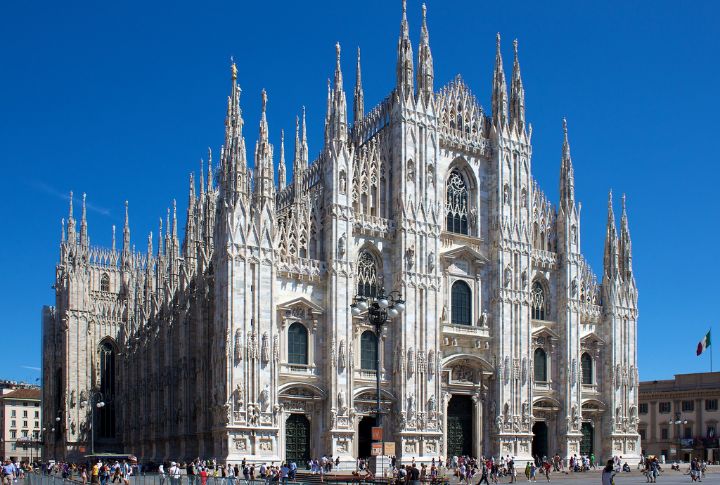
This one’s not shy about drama. The Duomo di Milano took over six centuries to complete and finished in 1965. It flaunts over 3,400 statues and 135 spires, all meticulously carved in white Candoglia marble. Notably, you can walk its rooftop terraces for a close-up view of its architectural forest.
Chartres Cathedral, France
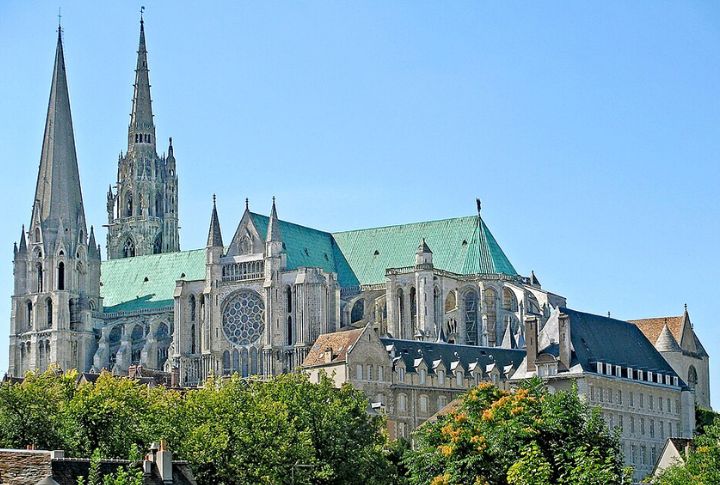
Completed in 1252, Chartres is best known for its 176 stained glass windows, most of which were from the 12th and 13th centuries. The famous “Blue of Chartres” has never been replicated. Additionally, it houses a relic believed to be the tunic of the Virgin Mary.
St. Stephen’s Cathedral, Vienna

A cathedral that wears a mosaic roof like a crown. St. Stephen’s dates back to the 12th century, but its current form was formed in 1578. Its 446-foot south tower offers panoramic city views. The colorful roof is adorned with 230,000 glazed tiles, forming Vienna’s coat of arms.
Notre-Dame Cathedral, Paris
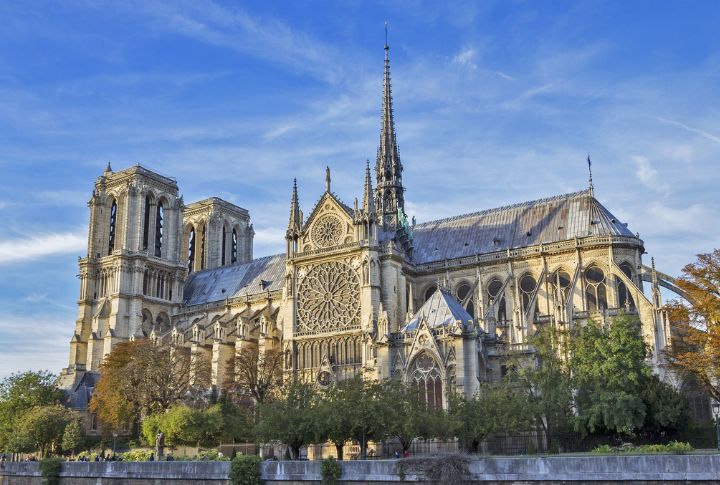
This building’s construction began in 1163, and it became a jewel of French Gothic architecture with its flying buttresses and two iconic towers. Victor Hugo’s novel helped save it from demolition in the 19th century. Recently reopened after the devastating 2019 fire, it now stands restored to welcome visitors.
Burgos Cathedral, Spain

Burgos Cathedral is predominantly Gothic, especially in its symmetrical towers and ornate portals. Yet, by the 15th and 16th centuries, Flamboyant Gothic flourished, and Renaissance additions gave it added theatricality. It also houses the tomb of El Cid, Spain’s national hero, making it as culturally significant as it is visually stunning.
Westminster Abbey, London
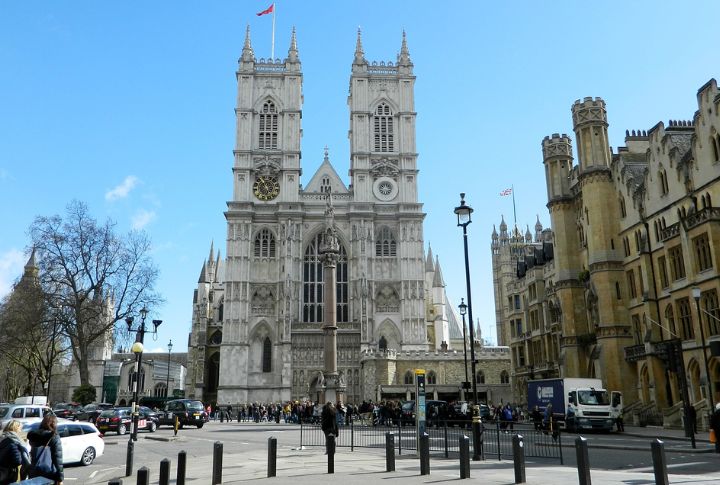
Founded in 960 and rebuilt in Gothic style by Henry III in 1245, the Abbey has hosted every English coronation since 1066. Its fan-vaulted ceilings in the Henry VII Chapel are considered architectural marvels. Surprisingly, over 3,000 people are buried here, including Isaac Newton and Stephen Hawking.
Seville Cathedral, Spain
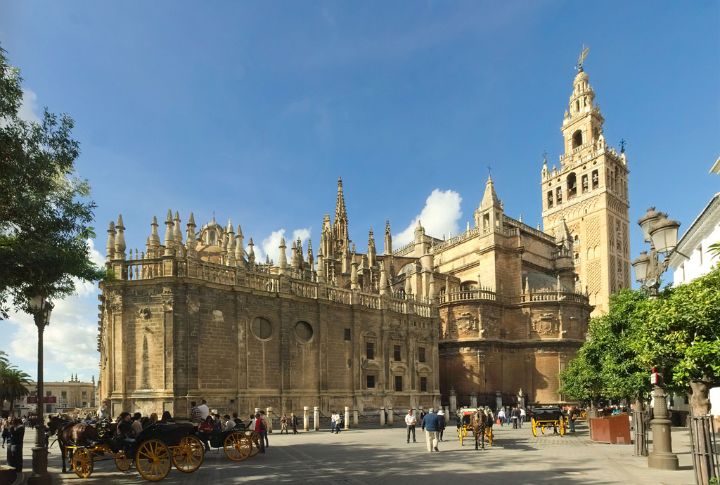
Big. Bold. Absolutely unforgettable. Completed in 1507, it’s the largest Gothic cathedral by volume in the world. Built on the spot of a former mosque, it integrates Islamic influences. The interior houses 80 chapels and a lavish gold altarpiece considered the largest in Christendom.
Reims Cathedral, France
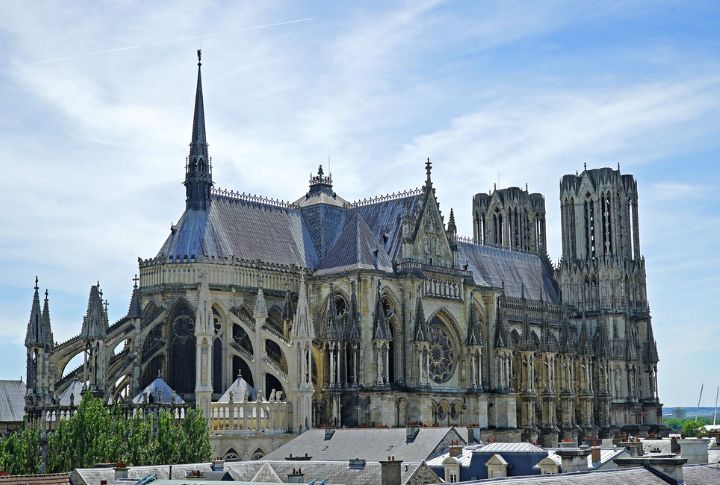
They crowned French kings here for centuries. Reims Cathedral was built between 1211 and 1345, though restoration followed extensive WWI damage. It hosted 25 coronations, including Charles VII’s, famously attended by Joan of Arc. Notably, its west facade features the “Smiling Angel,” a sculpture that’s become an enduring symbol of hope.
St. Vitus Cathedral, Prague
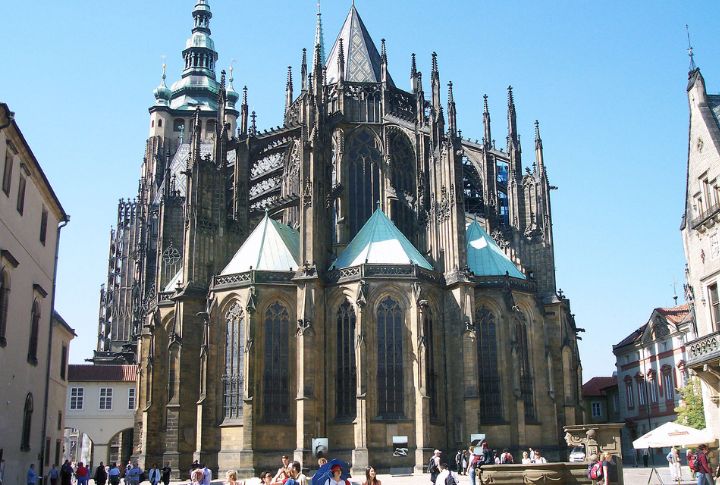
The construction of St. Vitus Cathedral in Prague spanned from 1344 to 1929, combining High Gothic architecture with later Neo-Gothic elements. Inside, visitors are awestruck by the Chapel of St. Wenceslas, decorated with gold and semi-precious stones. The cathedral is also home to the Bohemian crown jewels, kept securely behind seven locks.
Amiens Cathedral, France
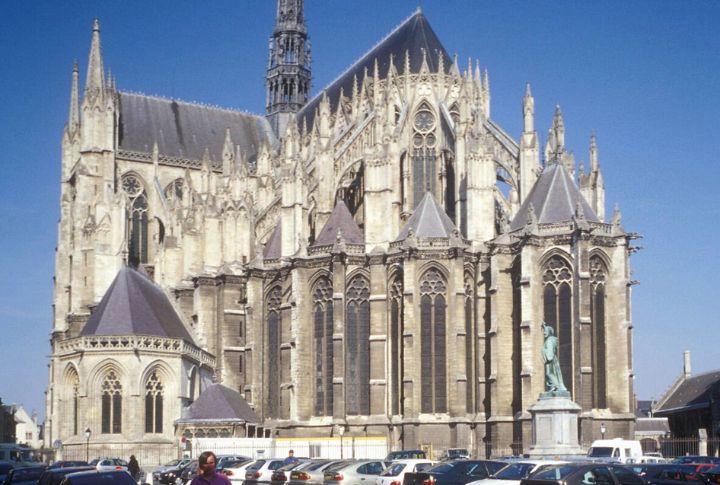
It’s so big, that you could fit Notre-Dame inside. Amiens Cathedral is the largest in France by interior volume, completed in 1270. Its High Gothic style shows in its soaring nave and intricate sculptures. During winter, a light show reveals the original colors painted on its facade.
Toledo Cathedral, Spain
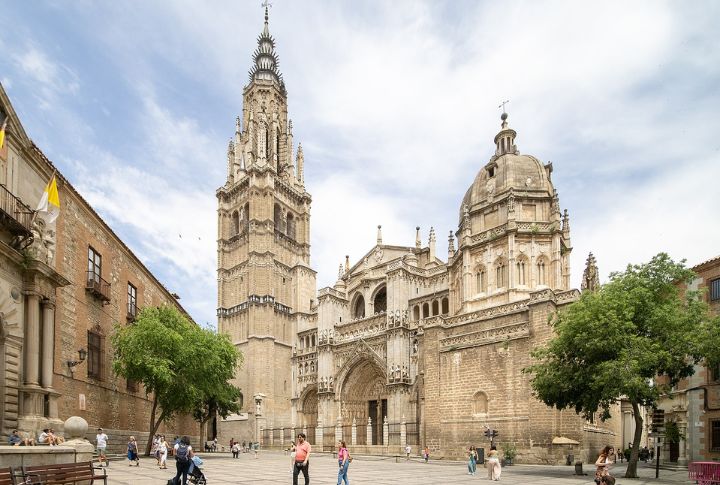
Stone and sunlight argue over your attention here. Begun in 1226, Toledo Cathedral is a blend of Spanish Gothic with Mudejar and Baroque details layered over centuries. The “Transparente” floods light into the tabernacle and stuns nearly every visitor.
Laon Cathedral, France
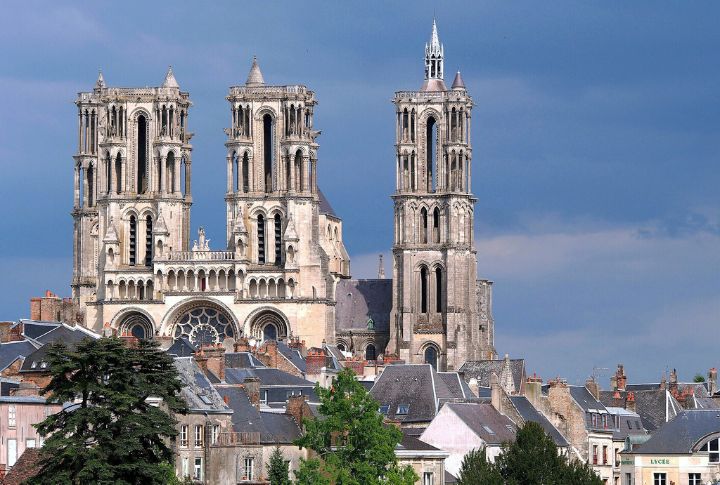
Built in the 12th century, Laon Cathedral was one of the earliest Gothic cathedrals and features a rare five-tower layout. Sculpted oxen line the towers, said to honor the animals who helped haul the heavy stone uphill. Its unity of form and luminous clerestory windows make it a pure expression of early Gothic ideals.
Canterbury Cathedral, England
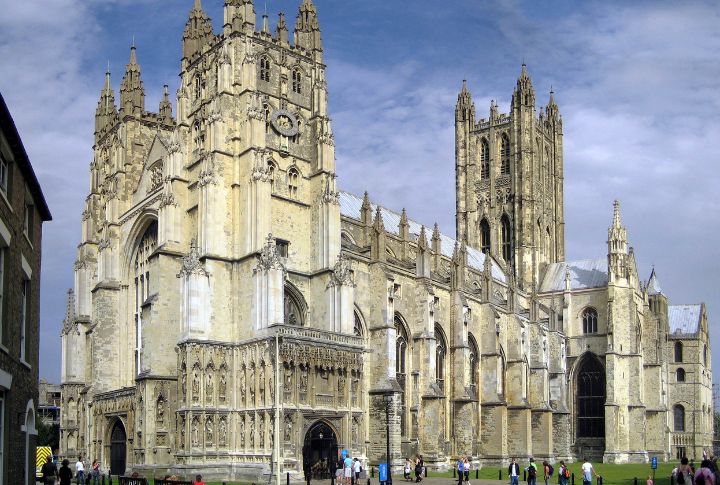
After Archbishop Thomas Becket was murdered in 1170, Canterbury became a major pilgrimage site, famously chronicled in Chaucer’s tales. Rebuilt in Gothic style starting in 1174, the cathedral now houses stunning stained glass that has survived war and time.
Rouen Cathedral, France
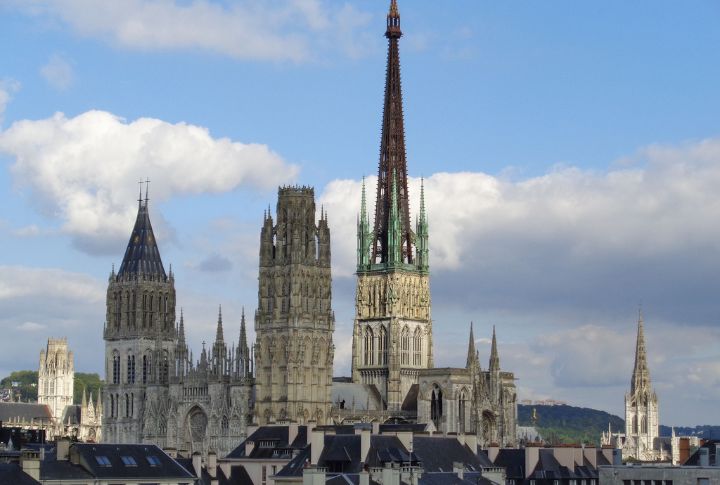
Claude Monet painted it 30 times, and he wasn’t exaggerating. Rouen’s facade changes color with the light, which showcases the Impressionist painter. Built from the 12th to 16th centuries, it features a mix of Gothic phases, including Flamboyant Gothic tracery.
Leon Cathedral, Spain
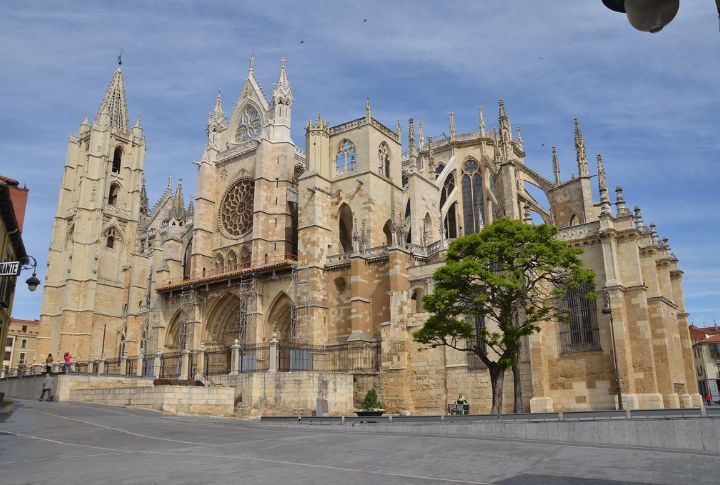
Light lives here like a tenant. Often called the “Pulchra Leonina,” this 13th-century cathedral is famous for its 1,800 square meters of stained glass. Constructed on Roman baths, it’s also one of the purest examples of French-style Gothic in Spain.
Siena Cathedral, Italy
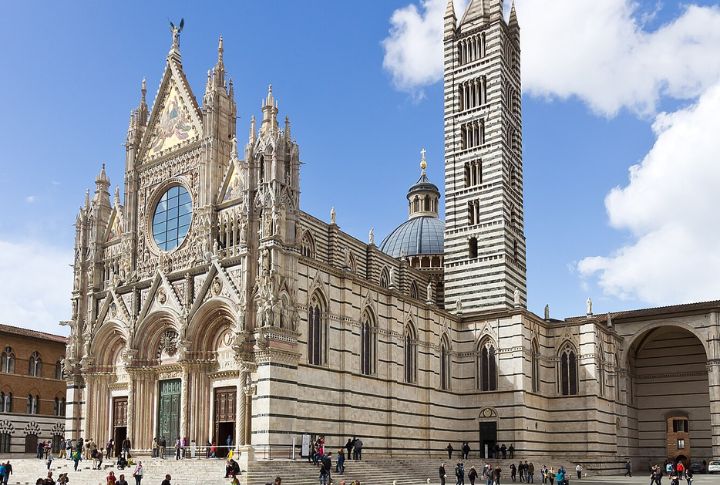
Unlike its northern counterparts with their towering spires, Siena Cathedral stretches wide with bold black-and-white marble stripes. Between 1215 and 1348, it evolved into a fusion of Gothic and Romanesque styles. The interior features intricate Biblical mosaics on the floors and Renaissance frescoes in the Piccolomini Library.
York Minster, England
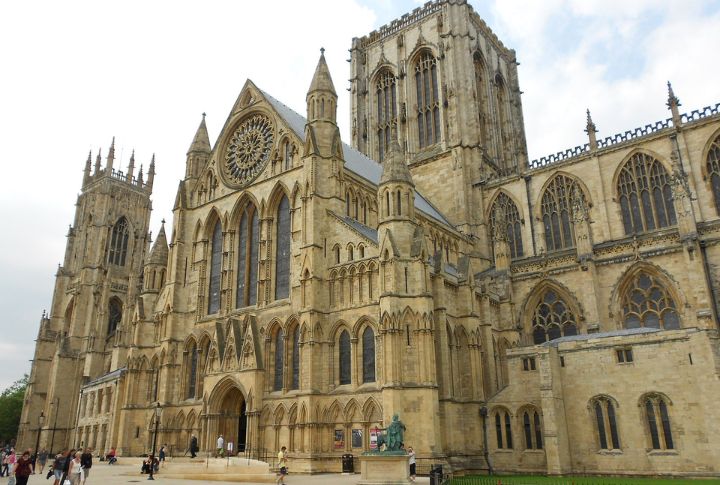
Here, stone sings in stained glass. York Minster’s Great East Window is the largest medieval stained glass window in the world. Its towers rise over 200 feet, but it’s what’s inside that humbles visitors: stone fan vaults and elaborate chapter house carvings. Beneath its floors, a Roman fortress lies buried.
St. Mary’s Church, Gdansk
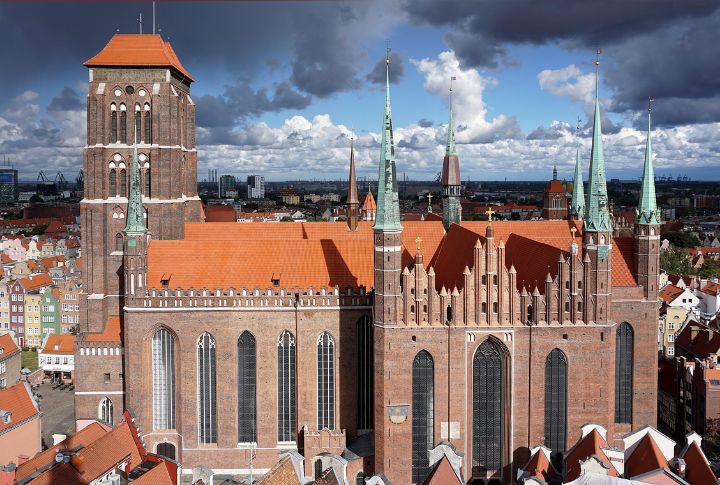
It’s built entirely of brick, yet feels like a mountain. St. Mary’s isn’t a cathedral, but it earns its spot as the largest brick church in the world. Completed in 1502, it blends Gothic austerity with northern toughness. Inside, a massive 15th-century astronomical clock tells time with cosmic flair.
Metz Cathedral, France

They call it “God’s Lantern” for a reason. Metz Cathedral has the largest expanse of stained glass in the world. Built between 1220 and 1520, it features Flamboyant Gothic decoration and later contributions by Marc Chagall. Interestingly, the golden Jaumont limestone used for construction glows in the sun.
St. Patrick’s Cathedral, New York
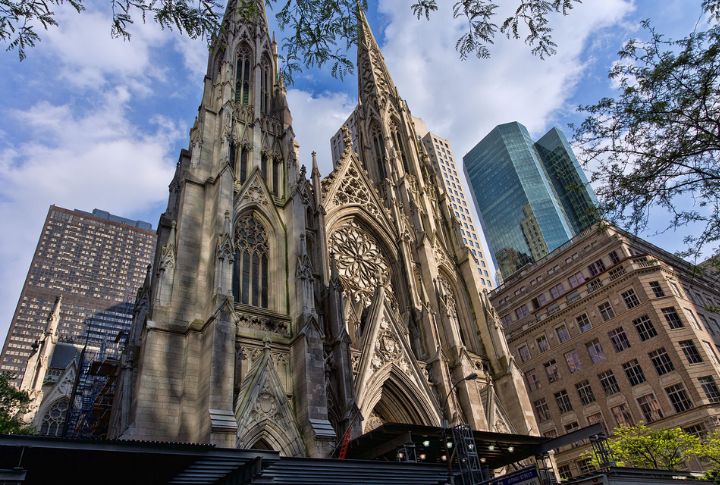
St. Patrick’s Cathedral brings a touch of Gothic grandeur to the urban scene of Midtown Manhattan. Standing across from Rockefeller Center, this Neo-Gothic cathedral, completed between 1858 and 1878, rises 330 feet. Though more modern than its European counterparts, it draws inspiration from their vertical ambition with pointed arches and ribbed vaulting.
St. Peter’s Church, Leuven
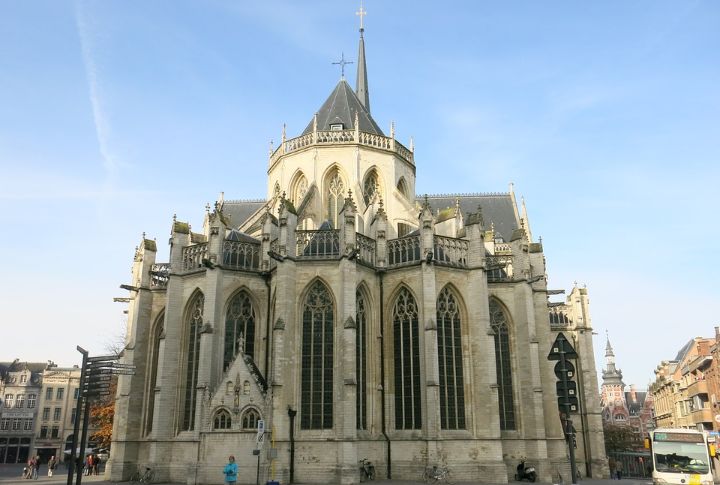
History left fingerprints on every pillar. Dating back to 1425, this Brabantine Gothic church sits in the heart of Leuven, Belgium. Its original tall towers were never completed, giving it an oddly grounded silhouette. Inside, you’ll find the famed “Last Supper” painting by Dieric Bouts, considered the first Flemish panel.
King’s College Chapel, Cambridge
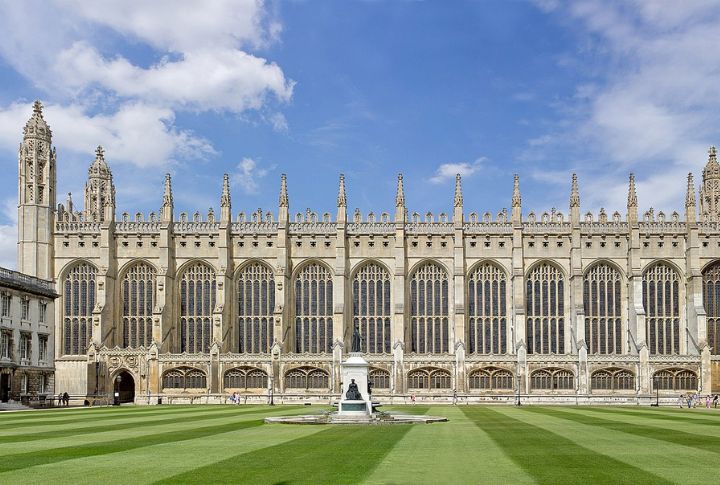
Commissioned by Henry VI in 1446, this English Gothic marvel has the largest fan-vaulted ceiling on Earth. Every Christmas Eve, millions listen to its “Festival of Nine Lessons and Carols” broadcast worldwide. The chapel’s stained glass survived the Reformation and World War II, giving visitors a rare glimpse of uninterrupted craftsmanship.
Uppsala Cathedral, Sweden
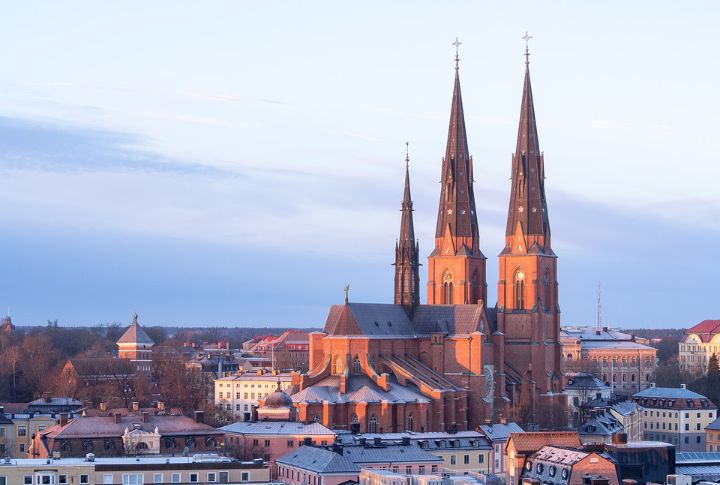
The cold north doesn’t stop beauty from blooming. Finished in the 15th century, Uppsala Cathedral is the tallest in Scandinavia at over 389 feet. It contains the tombs of King Gustav Vasa and Carl Linnaeus, as well as ancient relics from Sweden’s transition from paganism to Christianity.
Barcelona Cathedral, Spain
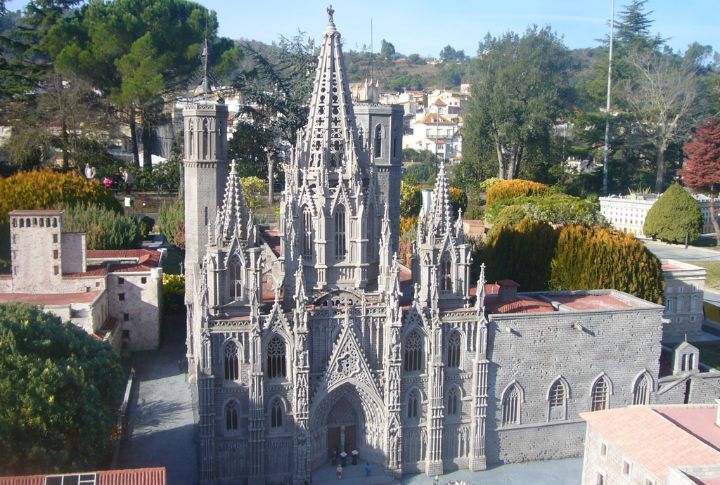
Constructed from the 13th to 15th centuries, this cathedral dazzles with its cloister full of white geese to match the age of the martyred saint. Its richly carved choir stalls and stone gargoyles show traditional Gothic elements, yet the airy Catalan aesthetic sets it apart.

